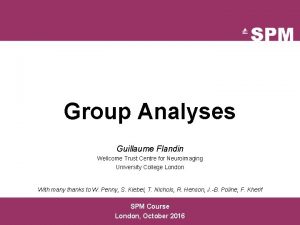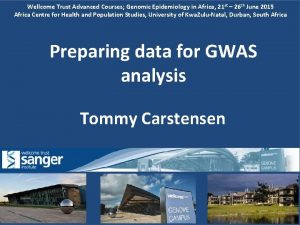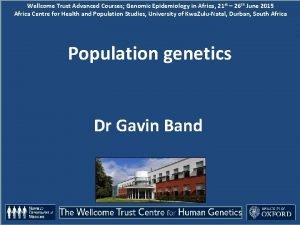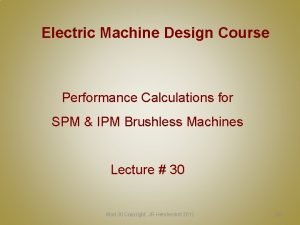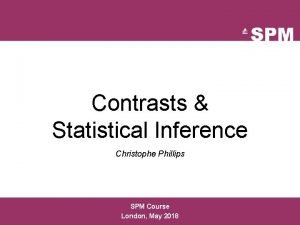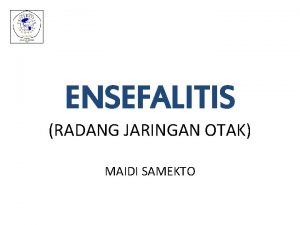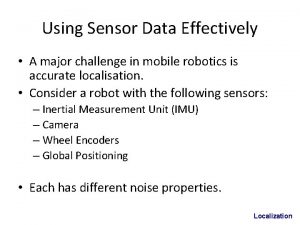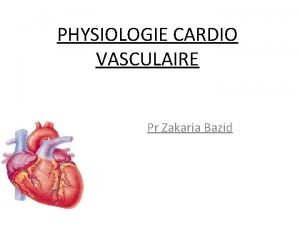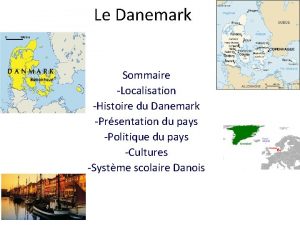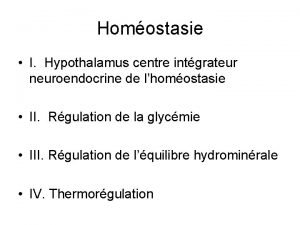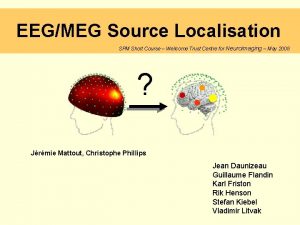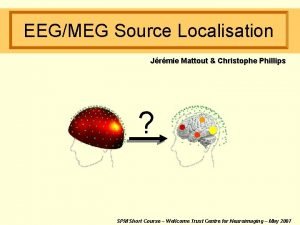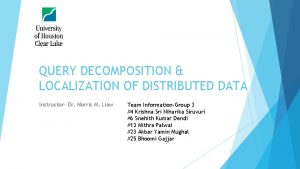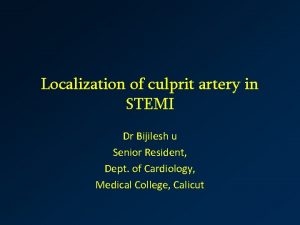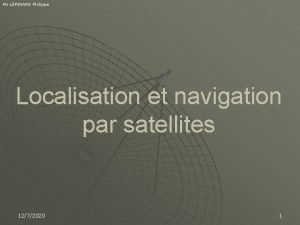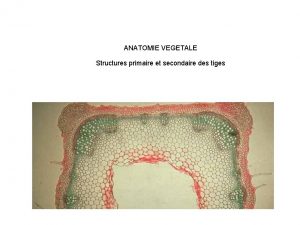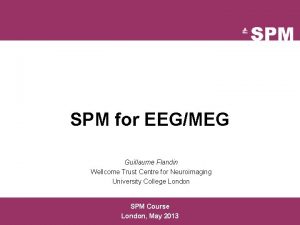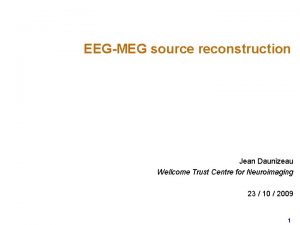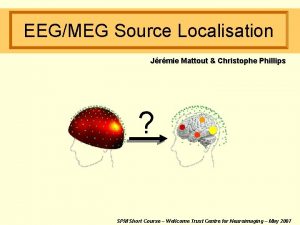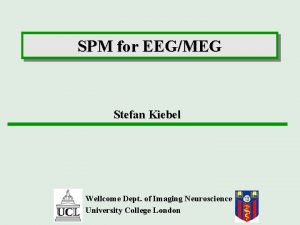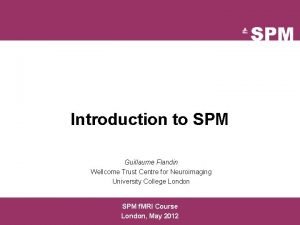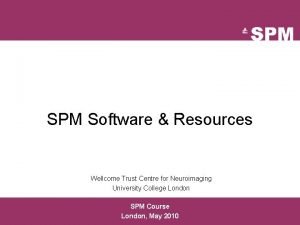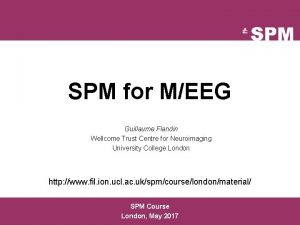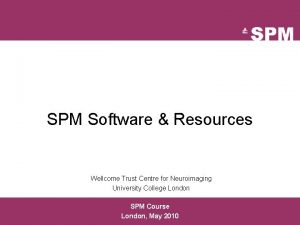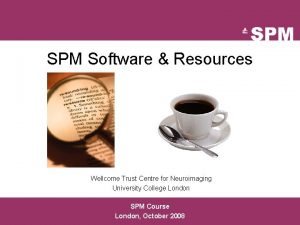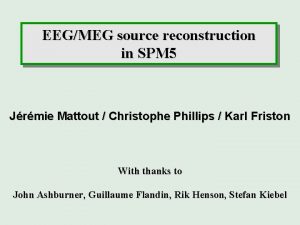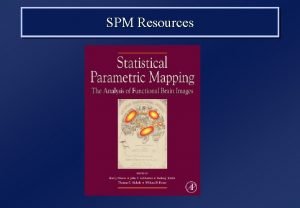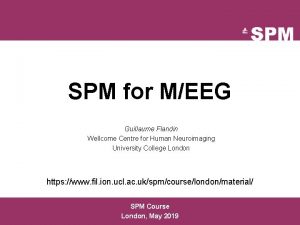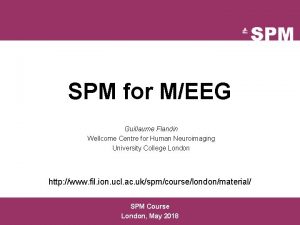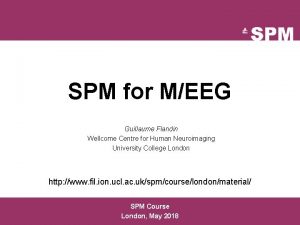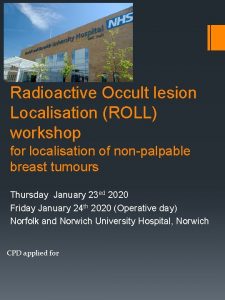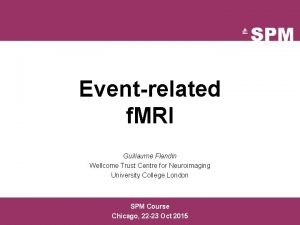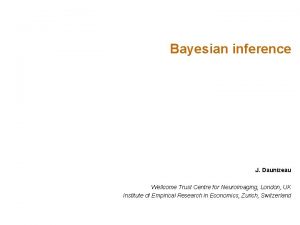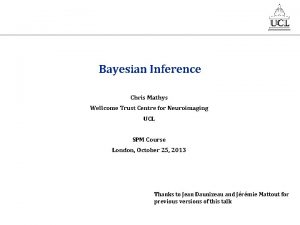EEGMEG Source Localisation SPM Course Wellcome Trust Centre




































- Slides: 36

EEG/MEG Source Localisation SPM Course – Wellcome Trust Centre for Neuroimaging – Oct. 2008 ? Jérémie Mattout, Christophe Phillips Jean Daunizeau Guillaume Flandin Karl Friston Rik Henson Stefan Kiebel Vladimir Litvak

EEG/MEG Source localisation Outline 1. Introduction 2. Forward model 3. Inverse problem 4. Bayesian inference applied to the EEG/MEG inverse problem 5. Conclusion

EEG/MEG Source localisation Outline 1. Introduction 2. Forward model 3. Inverse problem 4. Bayesian inference applied to the EEG/MEG inverse problem 5. Conclusion

EEG/MEG Source localisation Introduction: overview

EEG/MEG Source localisation Introduction: overview Forward model Inverse problem EEG/MEG source reconstruction process

EEG/MEG Source localisation Outline 1. Introduction 2. Forward model 3. Inverse problem 4. Bayesian inference applied to the EEG/MEG inverse problem 5. Conclusion

EEG/MEG Forward model: formulation Source localisation Forward model data forward operator source noise parameters

EEG/MEG Source localisation Forward model: source space source biophysical model: current dipole Equivalent Current Dipoles (ECD) - few dipoles with EEG/MEG source models free location and orientation Imaging or Distributed - many dipoles with fixed location and orientation

EEG/MEG Source localisation Forward model: imaging/distributed model data gain matrix dipole noise amplitudes

EEG/MEG Source localisation Outline 1. Introduction 2. Forward model 3. Inverse problem 4. Bayesian inference applied to the EEG/MEG inverse problem 5. Conclusion

EEG/MEG Source localisation Inverse problem: an ill-posed problem « Will it ever happen that mathematicians will know enough about the physiology of the brain, and neurophysiologists enough of mathematical discovery, for efficient cooperation to be possible ? » Jacques Hadamard (1865 -1963) 1. Existence 2. Unicity 3. Stability Inverse problem

EEG/MEG Source localisation Inverse problem: an ill-posed problem « Will it ever happen that mathematicians will know enough about the physiology of the brain, and neurophysiologists enough of mathematical discovery, for efficient cooperation to be possible ? » Jacques Hadamard (1865 -1963) 1. Existence 2. Unicity 3. Stability Inverse problem

EEG/MEG Source localisation Inverse problem: an ill-posed problem « Will it ever happen that mathematicians will know enough about the physiology of the brain, and neurophysiologists enough of mathematical discovery, for efficient cooperation to be possible ? » Jacques Hadamard (1865 -1963) 1. Existence 2. Unicity 3. Stability Inverse problem Introduction of prior knowledge (regularization) is needed

EEG/MEG Source localisation Inverse problem: regularization Spatial and temporal priors Data fit W = I : minimum norm Adequacy with other modalities data fit W = Δ : maximum smoothness (LORETA) prior (regularization term)

EEG/MEG Source localisation Outline 1. Introduction 2. Forward model 3. Inverse problem 4. Bayesian inference applied to the EEG/MEG inverse problem 5. Conclusion

EEG/MEG Bayesian inference: probabilistic formulation Source localisation Forward model likelihood Inverse problem posterior likelihood posterior evidence prior

EEG/MEG Source localisation Bayesian inference: hierarchical linear model sensor (1 st) level likelihood source (2 nd) level prior Q : (known) variance components (λ, μ) : (unknown) hyperparameters

EEG/MEG Source localisation Bayesian inference: variance components # dipoles … Minimum Norm (IID) Maximum Smoothness (LORETA) Multiple Sparse Priors (MSP)

EEG/MEG Source localisation Bayesian inference: iterative estimation scheme Expectation-Maximization (EM) algorithm E-step estimate M-step estimate while keeping constants

EEG/MEG Bayesian inference: model comparison Source localisation At convergence Fi 1 2 3 model Mi

EEG/MEG Source localisation Outline 1. Introduction 2. Forward model 3. Inverse problem 4. Bayesian inference applied to the EEG/MEG inverse problem 5. Conclusion

EEG/MEG Source localisation Conclusion: At the end of the day. . . Somesthesic data Bilateral auditory tone

EEG/MEG Source localisation Conclusion: At the group level. . . Individual reconstructions in MRI template space L R R L Group results p < 0. 01 uncorrected

EEG/MEG Source localisation Conclusion: Summary • EEG/MEG source reconstruction: 1. forward model 2. inverse problem (ill-posed) • Prior information is mandatory • Bayesian inference is used to: 1. incorpoate such prior information… 2. … and estimating their weight w. r. t the data 3. provide a quantitative feedback on model adequacy Forward model Inverse problem

EEG/MEG Source localisation Equivalent Current Dipole (ECD) solution source biophysical model: current dipole few dipoles with free location and orientation Equivalent Current Dipoles (ECD) EEG/MEG source models Imaging or Distributed many dipoles with fixed location and orientation

EEG/MEG ECD approach: principle Source localisation Forward model data forward operator dipole noise parameters but a priori fixed number of sources considered iterative fitting of the 6 parameters of each dipole

EEG/MEG Source localisation ECD solution: variational Bayes (VB) approach Dipole J with location s and moment w generated data Y using E is white observation noise with precision γy. The locations s and moments w are drawn from normal distributions with precisions γs and γw. These are drawn from a prior gamma distribution.

EEG/MEG Source localisation ECD solution: “classical” vs. VB approaches “Classical” VB Hard constraints Yes Soft constraints No Yes Noise accommodation No Yes Model comparison (in general) No YES

EEG/MEG Source localisation ECD solution: when and how to apply VB-ECD? • can be applied to single time-slice data or average over time (MEG and EEG) • useful for comparing several few-dipole solutions for selected time points (N 100, N 170, etc. ) • although not dynamic, can be used for building up intuition about underlying generators, or using as a motivation for DCM source models • implemented in Matlab and available in SPM 8 b

EEG/MEG Source localisation Example 1: somestesic stimulation ERP data over 64 channels VB-ECD solution Scalp distribution, 21 ms post-stimulus

EEG/MEG Source localisation Example 2: auditory oddball Scalp potential for auditory stimulations Oddball stimuli Standard stimuli

EEG/MEG Source localisation Main references Litvak and Friston (2008) Electromagnetic source reconstruction for group studies Friston et al. (2008) Multiple sparse priors for the M/EEG inverse problem Kiebel et al. (2008) Variational Bayesian inversion of the equivalent current dipole model in EEG/MEG Mattout et al. (2007) Canonical Source Reconstruction for MEG Daunizeau and Friston (2007) A mesostate-space model for EEG and MEG Henson et al. (2007) Population-level inferences for distributed MEG source localization under multiple constraints: application to face-evoked fields Friston et al. (2007) Variational free energy and the Laplace approximation Mattout et al. (2006) MEG source localization under multiple constraints Friston et al. (2006) Bayesian estimation of evoked and induced responses Phillips et al. (2005) An empirical Bayesian solution to the source reconstruction problem in EEG

EEG/MEG Source localisation

EEG/MEG Source localisation Bayesian inference: multiple sparse priors - Log-normal hyperpriors - Enforces the non-negativity of the hyperparameters - Enables Automatic Relevance Determination (ARD)

EEG/MEG Source localisation Forward model: canonical mesh MNI Space Canonical mesh Subjects MRI Anatomical warping [Un]-normalising spatial transformation Cortical mesh

EEG/MEG Forward model: coregistration Source localisation From Sensor to MRI space EEG Head. Shape Rigid Transformation + Surface Matching Head. Shape MRI derived meshes MEG Full setup
 Wellcome trust
Wellcome trust Wellcome trust advanced courses
Wellcome trust advanced courses Wellcome trust courses
Wellcome trust courses Electric machine design training
Electric machine design training Spm course
Spm course Welcome our class
Welcome our class Clasificacion de desnutricion oms
Clasificacion de desnutricion oms Gomez classification
Gomez classification Introduction of malnutrition
Introduction of malnutrition Wellcome to my presentation
Wellcome to my presentation Sir henry wellcome postdoctoral fellowships
Sir henry wellcome postdoctoral fellowships Wl/2
Wl/2 Wellcome to my presentation
Wellcome to my presentation Management of kwashiorkor
Management of kwashiorkor Protein-energy malnutrition definition
Protein-energy malnutrition definition Wellcome
Wellcome Gif welcome images
Gif welcome images Sir henry wellcome postdoctoral fellowship
Sir henry wellcome postdoctoral fellowship Navsat transform
Navsat transform Tissu nodal localisation
Tissu nodal localisation Syndrome frontal
Syndrome frontal La maison verte et bleue
La maison verte et bleue Localisation danemark
Localisation danemark Tissu nodal
Tissu nodal Homostasie
Homostasie Localisation
Localisation Localisation
Localisation Localisation absolue et relative
Localisation absolue et relative Cms localisation
Cms localisation Localization of distributed data
Localization of distributed data Ecg localisation of mi
Ecg localisation of mi Localisation
Localisation Localisation gps
Localisation gps Localization industry standards association
Localization industry standards association Choler
Choler Pachyte discontinu
Pachyte discontinu Northern trust charitable trust
Northern trust charitable trust
